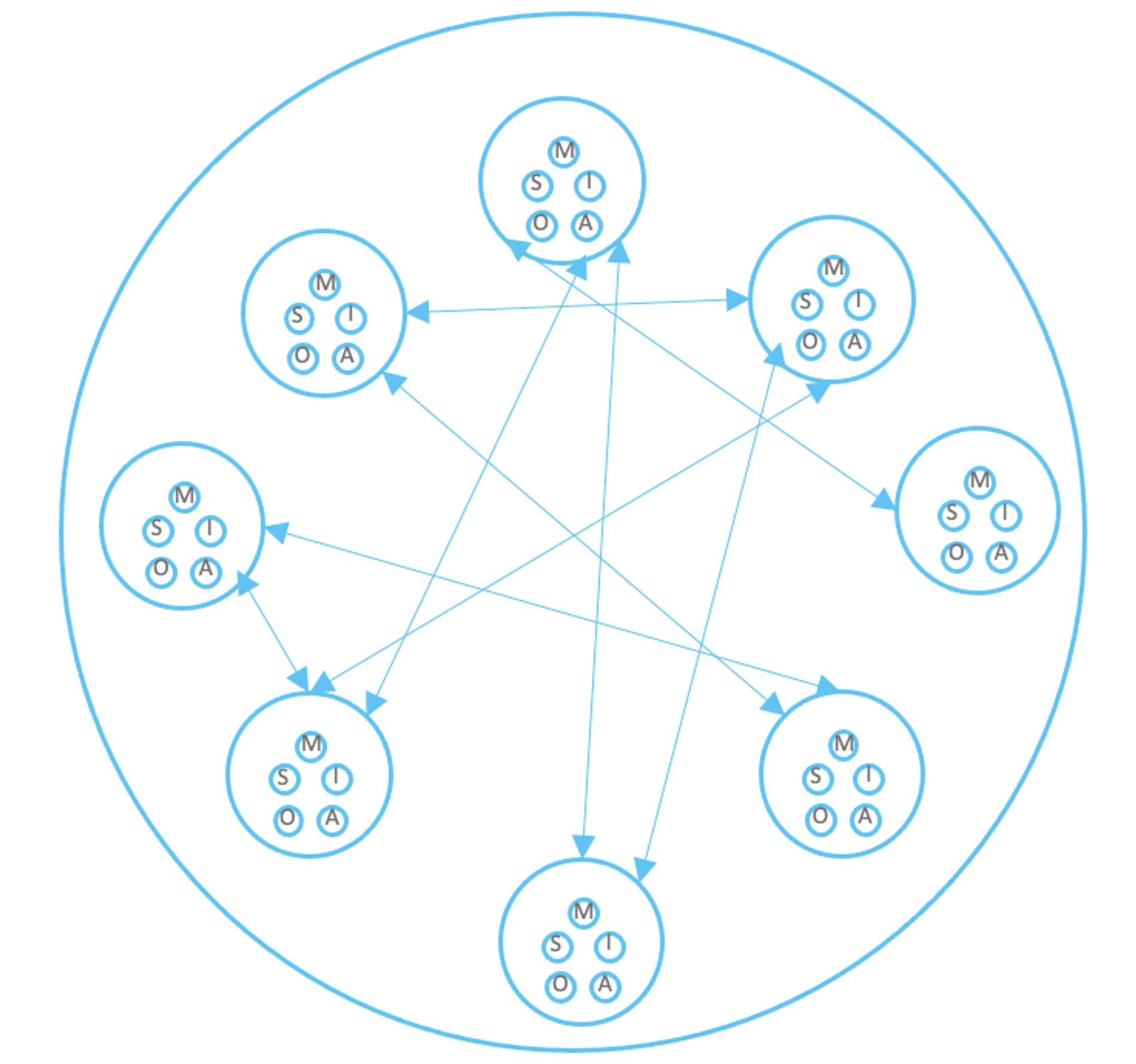One of the most important benefits of a group is co-regulation, and the good news it that our brains are neurally wired for it. Regulation is the ability to skillfully balance and assume volitional capacity on a particular system (i.e. attention, breathing, emotions, cognition and/or a group of people). In NeuroSystemics we have a gradual, step-by -step and “holonistic” approach to co-regulation, which can be understood in 3 steps: (i) sensing into and embodying the fullness of one’s immediate experience through all possible channels, (ii) strengthening and rooting a solid sense of self-esteem and goal-oriented directionality and choicefulness in individuals and (iii) inquiring into each of the participants’ experience in the group, and containing the complexity and diversity of resonance to allow a coherent sense of wholeness to emerge. Let us describe each of these stages in more detail.
(i) Sensing into and embodying the fullness of one’s immediate experience through all possible channels
In NeuroSystemics, we consider the content of one’s present moment experience to be subdivided in 6 possible ways, understood in the acronym MOSAIC:
- Meaning: Narrative, personality & biography
- Orientation: Present moment sensing of the environment
- Sensation: perception of physiology
- Affect: Feeling tones, emotions & moods
- Image: Mental images & imaginal constructs
- Consciousness: Knowing faculty of the mind
The main regulatory agent in this first stage in our clients’ consciousness, their capacity for kindly awareness and compassionate mindfulness. As our clients, in their own intra-psychic ways, are able to sense into their different channels and cultivate nervous system bandwidth to sustain attention in each of them, increased connectivity between each of the channels occur. Our clients go from sensing to sense-making:
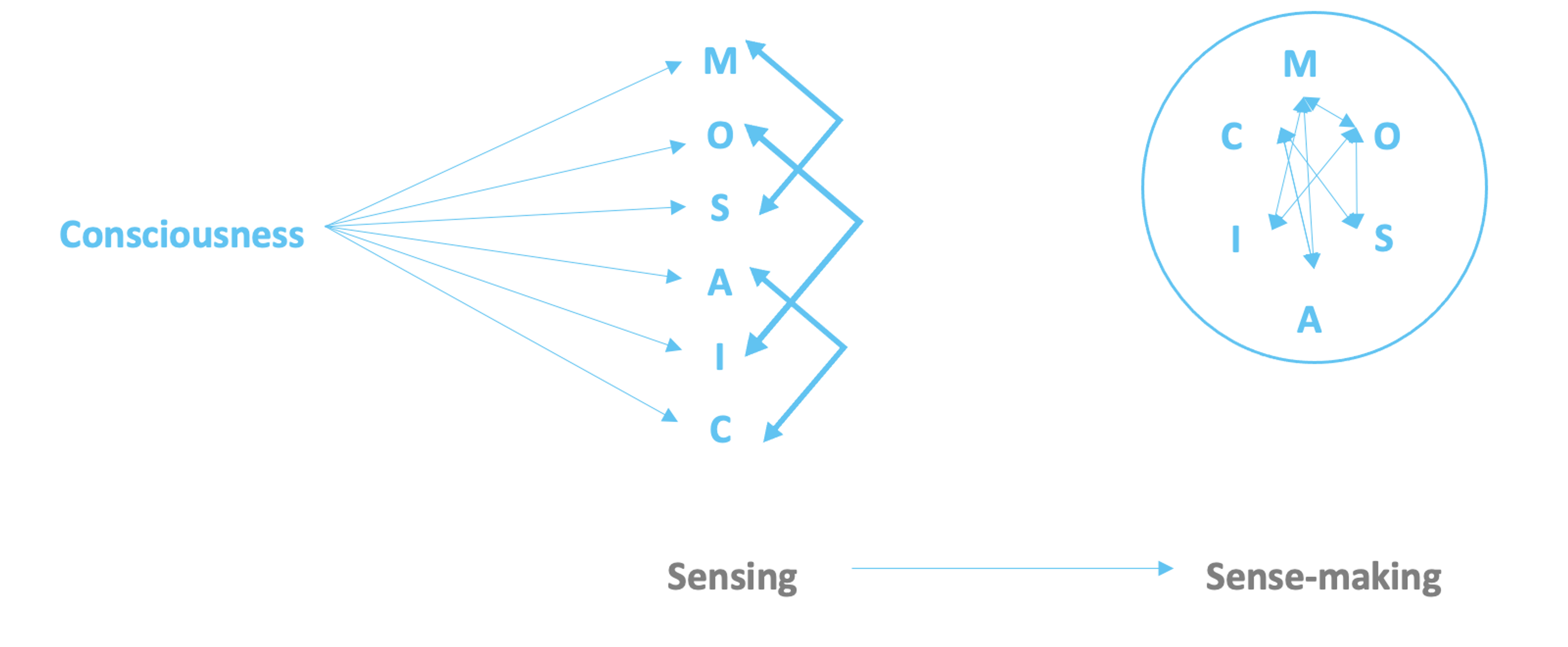
(ii) Strengthening and rooting a solid sense of self-esteem and goal-oriented directionality & choicefulness in individuals
As our clients build more networks between the MOSAIC channels of their immediate experience, feel more embodied and oriented to the here-and-now, it’s possible to engage in a deeper exploration of the ‘meaning’ channel by investigating our individual clients’ narratives, personality and life-stories they have and need to share. This enables a robust sense of self-esteem and self-drives. As our clients make more sense of their immediate embodied experience, they are then able to make clearer choices in their lives. Collectively with the MOSAIC networks of our clients’ immediate experience, these psycho-biological processes function as a springboard to enter a group setting.
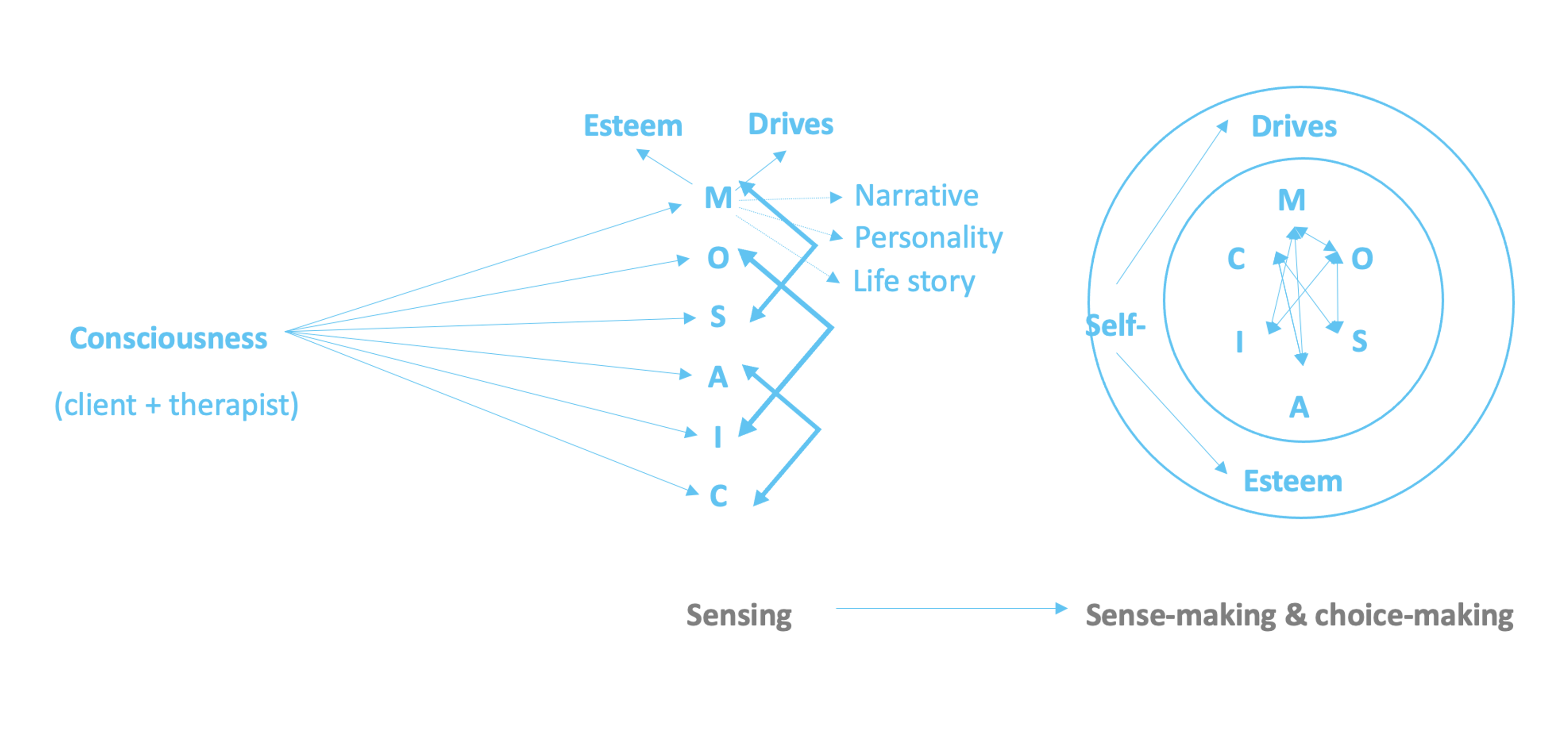
(iii) Inquiring into each of the participants’ experience in the group, and containing the complexity and diversity of resonance to allow a coherent sense of wholeness to emerge.
In the same way that an individual breathes in and breathes out, groups, as social organisms, breathe in when attention is given to the whole group (horizontal inquiry) and breathes out when focus is given to one individual in particular (vertical inquiry). Each individuals’ MOSAIC is then supported to network within its own channels, as well as co-networking with other individuals through the therapist’s active linking between them:
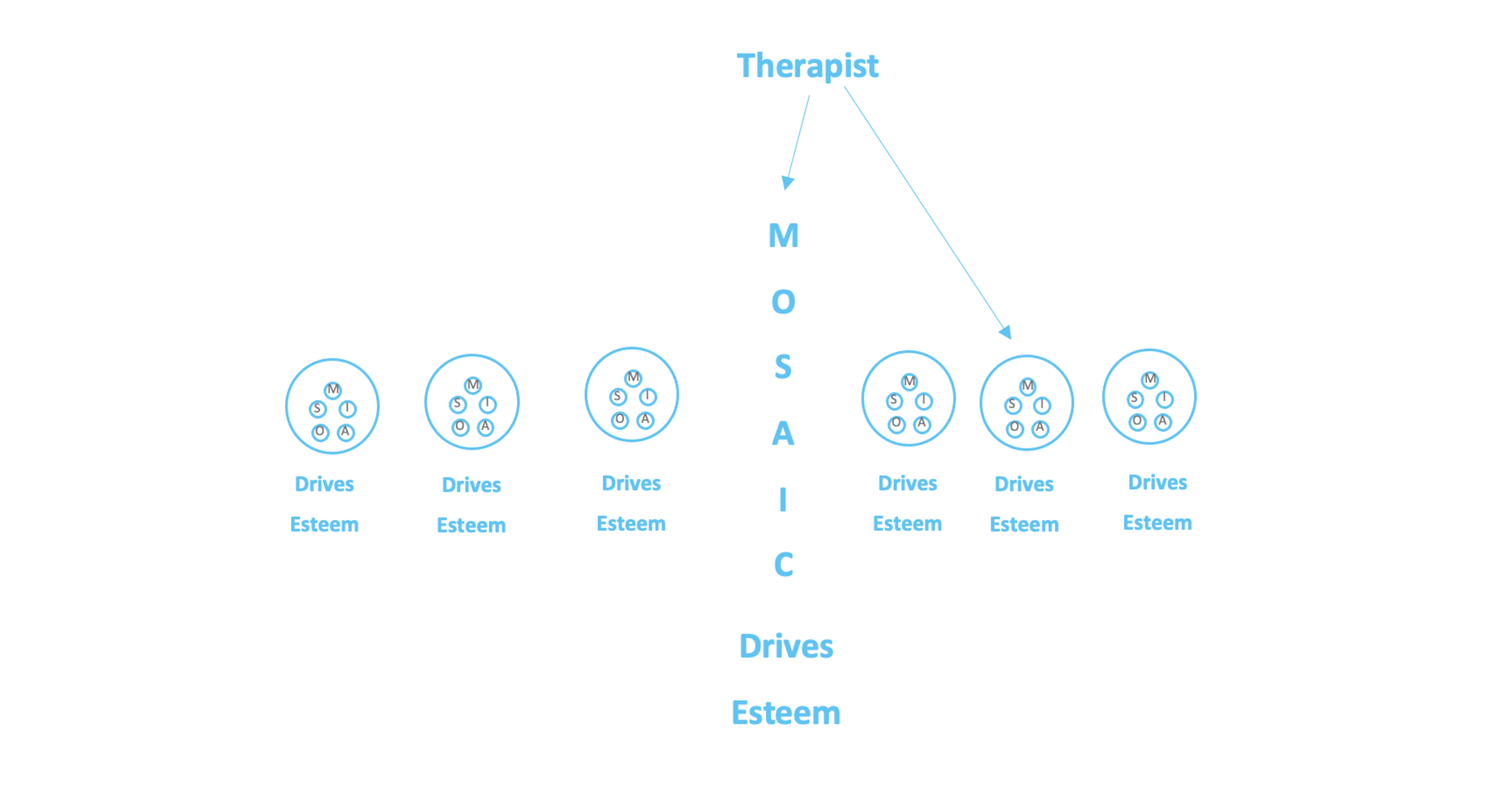
Therapists go through a 3-step process to help
- individuals in the group differentiate themselves, their MOSAICs, archetypic forms of self-esteem and idiosyncratic drives
- facilitate intergroup communications in order to contain the growing complexity of views, opinions, backgrounds, feelings, sensate experiences
- enable coherent moments emerging to be valued and embodied in individuals and the group-as-a-whole.
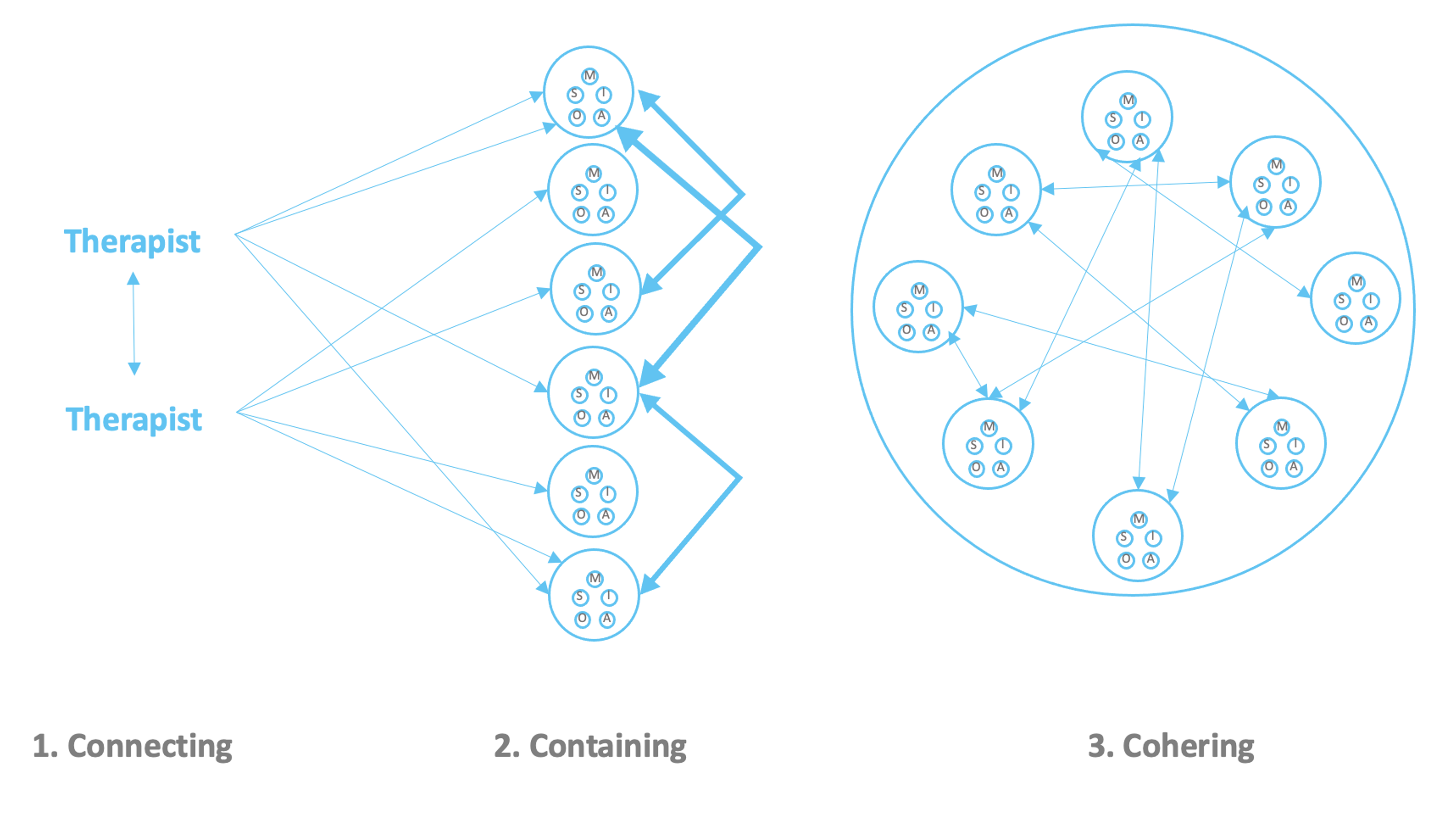
According to Porges & Buczynski (2011), feeling safe in groups activates a number of brain networks, including:
- The limbic system supported through acceptance, nonjudgment and empathy
- Neo-cortical circuitry, enabling memory reprocessing and restructuring, leading to the formation of more secure attachment patterns.
Group therapy can provide the safe and accepting environment that allows dissociated implicit memories to be held in kindness long enough to receive the disconfirming experience that is offered by the group’s growing capacity to resonate with and meet distressed individual members (Siegel, 2018). In this way, the group members learn to co-regulate one another and function as a unified whole, a social organism.
In NeuroSystemics, therefore, we link between intra-personal integration at the individual level (vertical inquiry) to inter-personal integration (horizontal inquiry). This dialectic between vertical and horizontal mechanics enable an omni-directional process of integration to enable group members to be fully oneself while embedded in the oneness of the group. By connecting to participants, containing interactions and cohering emergent insights and experiences in a paced, gentle and inviting progression, neural wholeness emerges.
May this article be for the benefit of all being.
You can learn more about the application of these evolutionary and systemic models, their associated neuroscientific empirical research, practice and interventions along with time for practice in our workshops, courses and trainings at www.neurosystemics.org/event-calendar.
References
Porges, S. W., & Buczynski, R. (2011). The polyvagal theory for treating trauma. Webinar, June, 15, 2012.
Siegel, D., (2018) in Badenoch, B., & Gantt, S. P. (Eds.). (2018). The interpersonal neurobiology of group psychotherapy and group process. Routledge.

